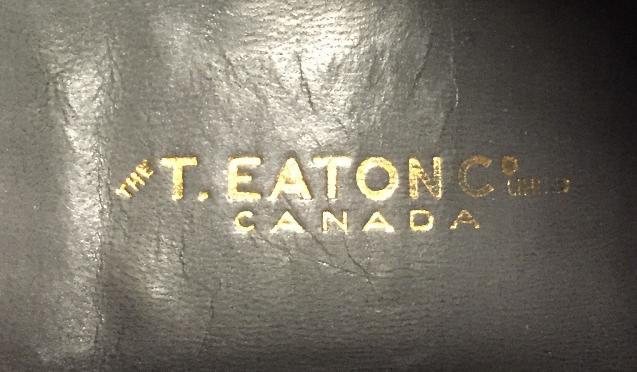Streamline Moderne
At the end of each year, our team reports on the Museum’s activities from the past twelve months – including what objects have been added to the Permanent Collection. As we compiled our list of 2015 acquisitions, there were a few unforgettable pieces that demanded our attention. These striking suede and leather heels from the 1930s are undoubtedly one of our “Staff Picks” for Favorite New Acquisition of 2015:
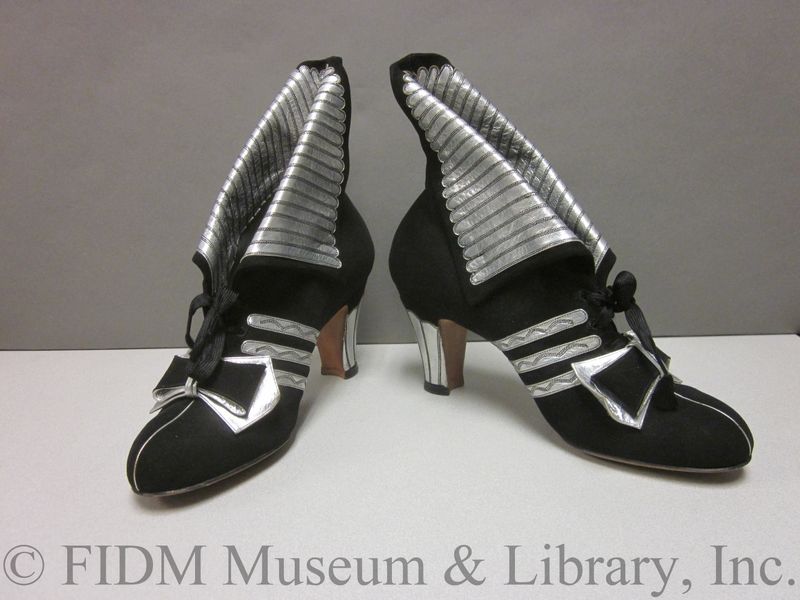 Shoes
Shoes
1930 - 1935
Suede and metallic leather
Museum Purchase
2015.5.57A-D
There is so much to take in when you look at these shoes. Does your eye travel directly to the graphically striped cuff? Maybe you first notice the silver and black bow, or the metallic heel. The boldness of these embellishments demonstrates how the nature of Art Deco design began to subtly change in the 1930s. Speed lines and smooth curves became the hallmark of what is now known as Streamline Moderne, the 1930s interpretation of Art Deco. Think of the blocky carvings and statues that adorn New York City’s Rockefeller Center, which opened in May 1933. The industrial design world embraced Streamline Moderne, and examples of this style appeared on everything from cars to clocks.
Thanks to a stamp on the insole, we know the shoes were sold by “T. Eaton’s.” To our Northern neighbors, this name surely has significance – Eaton’s was Canada’s most popular department store throughout the twentieth century, combining the glamour of Selfridges with the extensive geographic reach of Macy’s. Timothy Eaton founded his store in Toronto in 1869; like many department stores, Eaton’s began in the dry goods business. The store continued to expand, opening a location in Toronto’s fashionable shopping district, but sales truly skyrocketed when Mr. Eaton introduced his mail order service in 1884. The vast nature of Canadian territories meant that many residents outside of cities had difficulty purchasing supplies. Suddenly, Mr. Eaton’s catalog offered everything from fashion to farming equipment, thus spreading consumerism from city center to countryside, and forever changing the way Canadians shopped. The publication grew from thirty-two pages to over 500, and became something of a national treasure until it was discontinued in 1976.
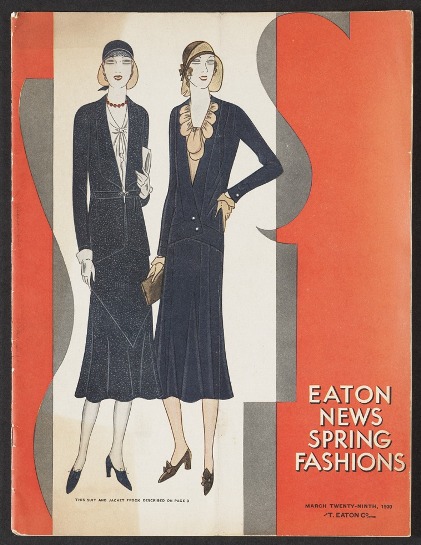
Eaton News Spring Fashions
March 29, 1930
McGill University Library
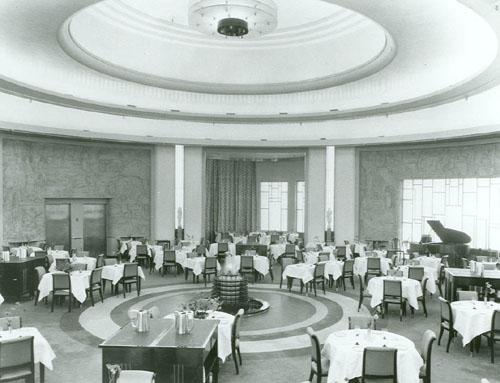
The Round Room on Eaton's Seventh Floor, 1930
Canada's Historic Places
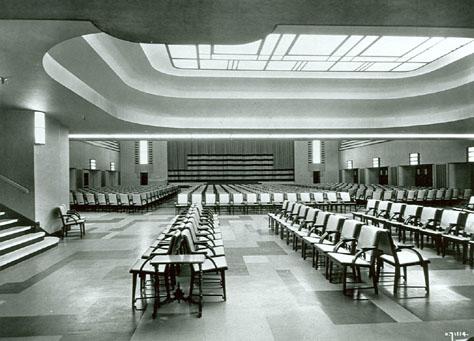
Eaton's Seventh Floor Auditorium, c. 1930
Canada's Historic Places
Sadly, Eaton’s was challenged by increased competition and the changing pace of retail in the last quarter of the twentieth century. Although the brand is now defunct, thankfully, College Street’s Seventh Floor was restored in 2003 to its original glory after being closed to the public for over twenty years. The Round Room and auditorium now operate as the event space Carlu, named in honor of the visionary architect. These unique Eaton’s shoes showcase the store in its prime, and we are thrilled to have this important Canadian brand represented in our Collection.
We want to hear from our Canadian readers – do you remember shopping at Eaton’s? Tell us about your experience!
[1] Donica Belisle, “Consuming Producers: Retail Workers and Commodity Culture at Eaton’s in Mid-Twentieth-Century Toronto” (Queen’s University Master of Arts Thesis, Kingston, Ontario, September 2001), 13.
[2] Bruce Allen Kopytek, Eaton’s: The Trans-Canada Store (Charleston: The History Press, 2014), 242.
Additional Resources:
Whiteson, Leon. “The Graceful Lines of Streamline Moderne.” The Los Angeles Times (Los Angeles, CA), Feb 11, 1990.
Canada’s Historic Places; http://www.historicplaces.ca
Canadian Museum of History; http://www.historymuseum.ca
Library and Archives Canada; http://www.collectionscanada.gc.ca
Art and History of Rockefeller Center; http://www.rockefellercenter.com/art-and-history
